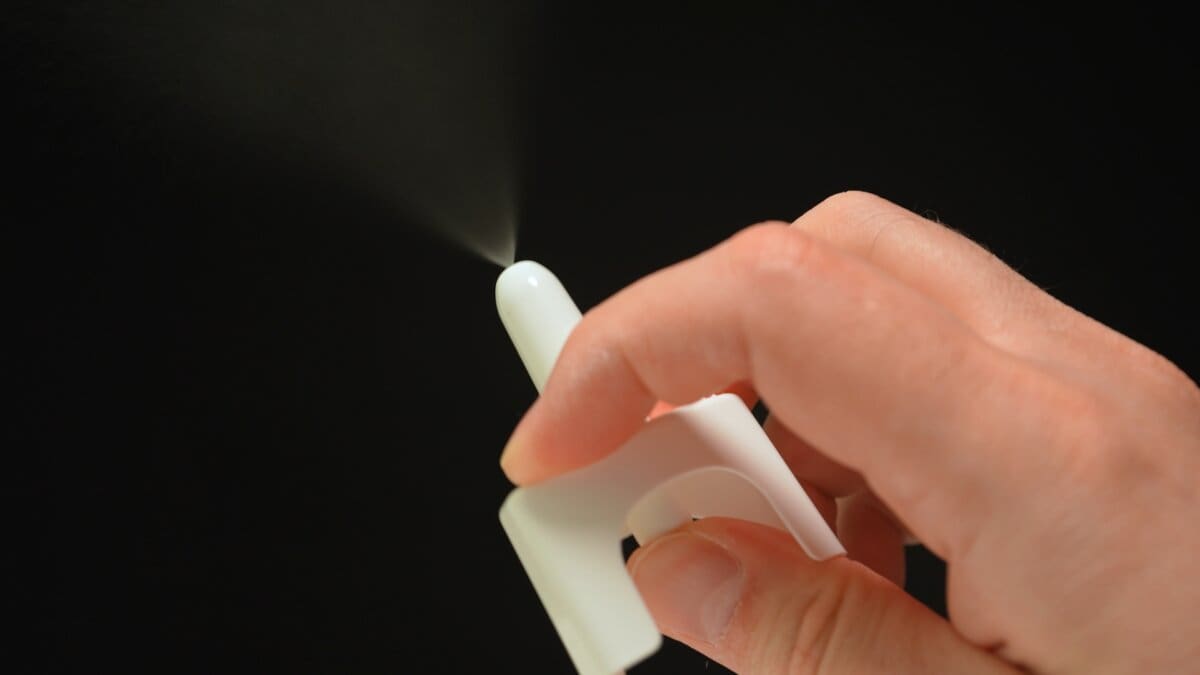Aging at Altitude
Full Guide to High Cholesterol—Risks, Warning Signs and Symptoms
When not effectively addressed, the risks of high cholesterol can play a direct role on your quality of life and increase your risk for various medical complications. Thriving late into life requires attention, care and a committed healthcare team.
As we get older, it’s essential to work with your primary care provider to determine your baseline levels for key health indicators that contribute to longevity. One of the most important elements of long-term health is managing the risks of high cholesterol.
What is Cholesterol?
Cholesterol is a waxy, fat-like substance that is found in every cell in the body. It is essential to a variety of key body functions, including digestion and hormone production.
Understanding cholesterol—both low-density lipoprotein (LDL) or “bad” cholesterol and high-density lipoprotein (HDL) or “good” cholesterol—is elemental to maintaining healthy arteries throughout life and lowering your likelihood of experiencing the risks of high cholesterol (hypercholesterolemia).
Here we take a closer look at understanding what cholesterol is and how it works in the body as well as the dangerous effects of elevated or high cholesterol (hypercholesterolemia).
Table of Contents
- The Different Types of Cholesterol
- What is Considered High Cholesterol?
- How to Know if You Have Elevated or High Cholesterol
- Are the symptoms and warning signs of high cholesterol different in women and men?
- Complications and Risks of High Cholesterol
- How frequently should you get your cholesterol checked?
- Risks Factors for High Cholesterol
- How to Reduce Your Chance of Developing High Cholesterol
- When to Seek Medical Attention for High Cholesterol
- Get Checked for High Cholesterol With Your PCP
Everything You Need to Know About the Risks of High Cholesterol and its Warning Signs

Cholesterol levels help determine your risk for heart disease, so it’s important to have a good grasp on what it is, what it does and when it becomes dangerous.
Cholesterol is a type of lipid (fat). The body produces cholesterol naturally in the liver and also absorbs it from certain foods—some providing good cholesterol and other culprits contributing to elevated or higher levels of bad cholesterol, which can increase your risk for certain diseases.
It has a waxy texture and is elemental in building healthy cell membranes. It also serves in the body’s production of estrogen, testosterone, cortisol and bile acids that help digest dietary fats. A lesser known but equally important fact about cholesterol’s functionality is its contribution to the production of vitamin D when the skin is exposed to sunlight.
Lipoproteins—combinations of fat and proteins—carry cholesterol through the bloodstream, and this is where “good” and “bad” cholesterol come into play.
The Different Types of Cholesterol
It’s important to talk with your primary care provider about the different types of cholesterol and their levels in your body to understand your risk levels.
Typically, your healthcare provider will check cholesterol levels with a blood test known as a lipid panel or lipid profile. That test shows results for the following types of cholesterol:
- Total cholesterol – This is simply the total amount of cholesterol in your bloodstream.
- Low-density lipoproteins (LDL) – Unaffectionately known as bad cholesterol, LDL transports cholesterol from the liver to the rest of the body. If there’s too much LDL cholesterol in your system, it begins to deposit on the walls of arteries resulting in plaque buildup, which can lead to high risk events like heart attacks and strokes.
- High-density lipoproteins (HDL) – HDL works to remove excess cholesterol from the blood and artery walls. It does this by carrying cholesterol back to the liver, where it’s processed and ultimately eliminated from the body. This helps reduce the risk of plaque buildup that can contribute to cardiovascular disease.
- Very low-density lipoprotein (VLDL) – Similar to LDL, VLDL carries triglycerides and cholesterol in the bloodstream, depositing some along the way and ultimately leading to additional plaque formation.
What is considered high cholesterol?
When referencing high cholesterol (hypercholesterolemia), it’s important to define what that means. Elevated or high total cholesterol typically refers to unhealthy levels of lipids in the blood, which is primarily LDL cholesterol.
Additionally, low levels of HDL cholesterol can contribute to dangerously high risk of cardiovascular events. Here’s a breakdown of cholesterol levels and when they become concerning.
As a rule, a total cholesterol level of 200 mg/dL or higher is considered high. The risk of high cholesterol depends on certain health factors, such as age, gender and whether or not a person has heart disease.
Total Cholesterol:
- Ideally less than 200 mg/dL
- Borderline high: 200–239 mg/dL
- High: 240 mg/dL and above
LDL Cholesterol (general rule: the lower the better):
- Ideally less than 100 mg/dL
- Borderline high: 130–159 mg/dL
- High: 160 mg/dL or higher
HDL Cholesterol (general rule: the higher the better):
- Higher risk: less than 40 mg/dL for men and less than 50 mg/dL for women
- Protective levels: 60 mg/dL or higher
Triglycerides (often a consideration in cholesterol checks):
- Normal: less than 150 mg/dL
- Borderline high: 150–199 mg/dL
- High: 200 mg/dL and above
How to Know if You Have Elevated or High Cholesterol
As there are no symptoms for hypercholesterolemia, the only true way to verify if you have elevated or high cholesterol is to have your healthcare provider perform a blood test.
If it goes unaddressed, high cholesterol can lead to significant complications and risks, including cardiovascular disease and stroke.
Are the symptoms and warning signs of high cholesterol different in women and men?
It’s important to note that elevated or high cholesterol itself does not have any noticeable symptoms, hence it is frequently referred to as a silent condition. Instead, high cholesterol can lead to increased risk of cardiovascular diseases.
The consequences and how the risks of high cholesterol play out over time are what can differ between male and female patients. Examples include:
- Heart disease risk: Men tend to develop heart disease as a result of elevated cholesterol earlier in life (in their 40s or 50s) while women experience this increased risk after menopause, once estrogen levels drop.
- Plaque buildup: Men are more likely to experience plaque buildup in the arteries, while women tend to build plaque in smaller vessels.
- Cardiovascular event: Men often present with standard symptoms of a heart attack or other cardiovascular event, including chest pain, pain in the left arm or shoulder and sudden dizziness. Women tend to demonstrate less cardiac-specific symptoms and signs, such as pain in the jaw, neck or throat, nausea or vomiting and extreme fatigue.
The Complications and Risks of High Cholesterol
High cholesterol deposits within arteries causes them to narrow. This narrowing of arteries is known as atherosclerosis—buildup that ultimately restricts blood flow.
It’s this lack of blood flow that creates serious risks and complications as a result of high cholesterol. The most common complications and risks of high cholesterol include:
- Stroke or transient ischemic attack (TIA)
- Heart attack or cardiovascular disease
- Peripheral artery disease (PAD)
- Kidney failure
- Angina
Let’s look at each of these complications more closely, and how high cholesterol creates greater risk of these complications occurring.
- Stroke or Transient Ischemic Attack (TIA) Caused by High Cholesterol – When plaque or blood clots caused by high cholesterol build up, they can block blood flow to the brain. This lack of blood flow to the brain can result in ischemic stroke or transient ischemic attack (mini stroke). While high cholesterol is not the only cause of a stroke, it can significantly increase your risk.
- Angina, Cardiovascular Disease or Heart Attack – In the case of cardiovascular artery disease (CAD), plaques block blood flow to the heart. This results in chest pain (also known as angina). This lack of blood flow to the heart causes an increased risk of heart attack. When plaque from high cholesterol builds up in the artery to a breaking point, it can rupture. This rupturing forms a blood clot, which can completely block an artery leading to a heart attack.
- Peripheral Artery Disease (PAD) – Peripheral artery disease is a condition when arteries become too narrowed or blocked to carry blood to the limbs, most commonly the legs. People experiencing PAD can experience discomfort, especially during physical activity, and more serious consequences if the condition goes untreated.
- Kidney Failure – When blood flow to the kidneys is restricted due to atherosclerosis (plaque buildup in the arteries), these essential organs can become strained. Kidneys receive less oxygen and nutrients, resulting in kidney damage and possible kidney failure if left untreated.
When it’s Time to Seek Medical Attention for High Cholesterol
The most important step you can take in ensuring you maintain healthy levels of cholesterol is getting your cholesterol checked. Your primary care provider can order a blood test to screen your cholesterol levels, and then monitor their rise or fall over time to determine your risk.
Talk with your doctor about when you should start getting your cholesterol checked and how frequently you need to follow up. If you experience any of the following potential elevated or high cholesterol signals or warning signs, seek immediate medical attention:
- Chest pain or pressure
- Shortness of breath
- Pain, numbness or cramping in the legs or arms
- Sudden dizziness, weakness, numbness or trouble speaking
How frequently should you get your cholesterol checked?

According to the Centers for Disease Control and Prevention, most healthy adults should have their cholesterol checked every four to six years. Additional considerations include:
- People who have heart disease, diabetes or a family history of high cholesterol should get their cholesterol checked more often, as they are at higher risk.
- Children should have their cholesterol checked at least once between the ages of 9 and 11, or more frequently for those who have obesity or diabetes. And again at least once between the ages of 17 and 21.
Risk Factors for High Cholesterol
High cholesterol can be the result of a variety of conditions, some of which we can control and others we can’t. Here are important considerations when it comes to your cholesterol levels and the associated risks.
Make sure to discuss your family history, heart health and lifestyle with your primary care provider so they can better gauge your risks for high cholesterol.
Modifiable High Cholesterol Risk Factors:
- Poor diet
- Physical inactivity
- Excess weight or obesity
- Smoking
- Alcohol consumption
- Certain medications
Pre-Existing Health Conditions And Health History:
- Diabetes
- High blood pressure
- Kidney disease or hypothyroidism
- Sleep apnea
Non-Modifiable High Cholesterol Risk Factors:
- Family history of cardiovascular events
- Genetics (familial hypercholesterolemia)
- Increasing age
- Sex (males are at higher risk)
Things You Can Do Now to Reduce Your Chances of Developing High Cholesterol

When it comes to maintaining a healthy balance of good cholesterol (HDL) and bad cholesterol (LDL) in your body, you need to pursue a healthy mix of diet, exercise, weight management and eliminate smoking and reduce or eliminate alcohol intake.
Here are some important steps you can take to lower your cholesterol and reduce your risk of adverse health events:
- Eat a healthy diet. Seek a diet high in healthy fats—including olive oil, avocados, salmon, tuna, nuts and seeds—can help improve HDL cholesterol levels. On the flip side, consuming too much saturated fats, like those found in red meat, full-fat dairy and butter, can raise LDL cholesterol. Also, try to avoid ultraprocessed foods and snacks and increase your fiber intake to reduce the risks of high cholesterol.
- Exercise regularly. While strength training and cardiovascular exercise are equally important as we age, aerobic exercise is notably effective at raising HDL cholesterol. Talk with your doctor about the best fitness program for you, but as a general rule, it’s good to aim for at least 150 minutes of moderate activity per week.
- Maintain a healthy body weight. Again, talk with your doctor about a good target body weight for you. Losing weight, even a small amount, can help lower LDL cholesterol and triglycerides while boosting HDL cholesterol.
- Quit smoking. Doing so can increase HDL cholesterol in a very short amount of time and will improve overall cardiovascular health.
- Limit or eliminate alcohol consumption. Drinking alcohol raises cholesterol and triglyceride levels.
- Medical interventions. Certain medications such as statins can lower LDL cholesterol significantly. Talk with your doctor about whether or not this is something you should consider for your hypercholesterolemia.
AVH is Here to Help You Reach Your True Health Potential
Regardless of where you are in your health journey, the primary care team at Aspen Valley Health is here to help you achieve longevity and maximum wellness.
Schedule an appointment today to learn more about your current cholesterol levels, your risks and what you can do to avoid high cholesterol and maintain a healthy lifestyle for years to come.
For more guidance on your Healthy Journey, let us know what interests you!





